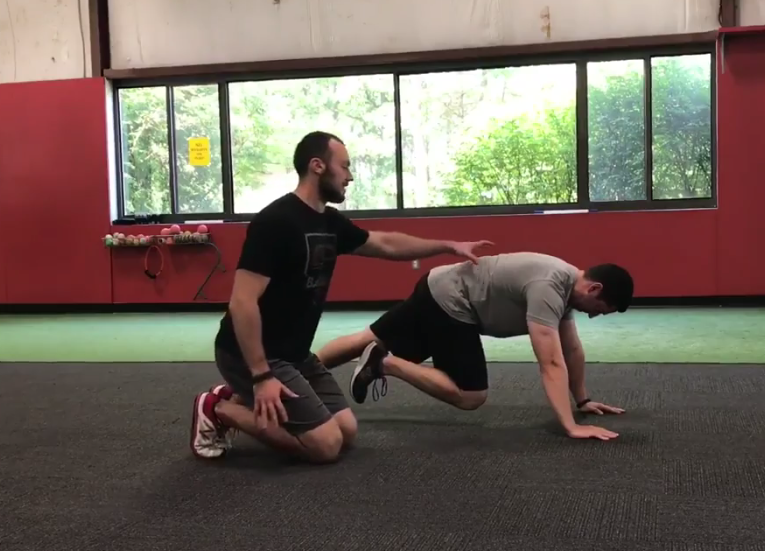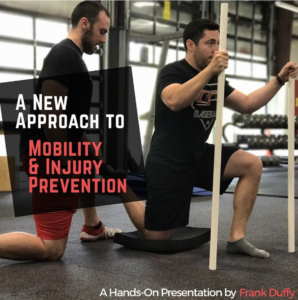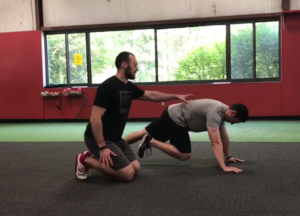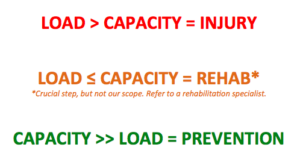
Are You Training Mobility or Just Mobilizing?
Today’s guest post comes from Cressey Sports Performance coach, Frank Duffy. Enjoy!
The word “mobility” gets thrown around a lot in the fitness industry, and rightfully so. However, the context in which we use it often doesn’t correspond properly with the movements we prescribe to our clients.
In order to appreciate what true mobility training is, I think it’s important to first understand what it isn’t. Wrapping a band around a squat rack and stretching your upper back might feel great and improve passive flexibility when done for long enough periods of time, but improvements in active mobility will not be an outcome. This goes for practically any drill you see within a warm-up prior to a training program. I prescribe a lot of mobilization drills to our athletes where the primary intent is to get them feeling good for their training session. I love Split-Stance Kneeling Adductor Mobilizations, but I’m not going to sit here and say that – by themselves – they are a great way to improve long-term hip abduction mobility.
When training to improve joint mobility, the goal is to improve active range of motion. Mobility, just like any training stimulus (strength, power, muscular endurance, aerobic capacity, etc.) we’re looking to improve follows the same principles of progressive overload in order to elicit an adaptation. Connective tissue, whether it’s a muscle, tendon, ligament, capsule, or bone (to name a few), needs to be placed under mechanical stress to remodel the tissue being addressed.
When implementing the Functional Range Conditioning (FRC) system, I like to expose new clients to Controlled Articular Rotations (CARs) in order to help them understand how to properly train for long-lasting joint range of motion improvements. While CARs will not directly improve our joint mobility, they do provide us with four main benefits that I’ve listed below.
1. Assessment: CARs are a great tool for assessing the overall ranges of motion at each joint. They allow us to move each joint throughout its full range of motion under voluntary muscular contractions. When active mobility is restricted and joint function is poor, CARs also allow us to determine what our mobility training goals should be.
2. Mechanoreception: The capsule of our joint articulations is home to a high concentration of mechanoreceptors. When stimulated through end-range movements, mechanoreceptors supply the Central Nervous System with afferent feedback with information about the joint’s position in space.
3. Injury Prevention/Training Stimulus: Because CARs are performed under active contractions, the force applied to the surrounding connective tissue is below the threshold for injury (amount of force a tissue could safely absorb). When done at high enough intensity via voluntary muscular contractions, CARs could also provide a strength training stimulus for force production at the targeted joint.
4. Maintenance of Joint Range of Motion: The primary goal of executing CARs daily is to move our joints throughout their full range of motion under some degree of force. This will allow us to maintain our current ranges over time due to consistent exposure.
As mentioned above, CARs are a great way to assess the quality of each joint because they isolate the articulation being moved. Of course, our joints move interdependently with virtually every movement we perform. However, if a joint doesn’t work effectively on its own, it’s not going to work well in a global system under load. A sure-fire way to induce injury is to repetitively load a position when you haven’t prepared the involved joints for force absorption.
To break out even further, the “sticking points” of your CARs allow you to determine the appropriate joint angles at which to perform isometric contractions for both the progressive (lengthened) and regressive (shortened) tissues. By figuring out your active range of motion limitations, you’re able to create positional isometrics to learn how to expand these ranges further.
With individuals that present osseous restrictions like Femoroacetabular Impingement (FAI), I still recommend CARs on a daily basis. Regardless of structural orientation, it’s important to move through whatever active range of motion you currently own. As cliché as it sounds, if you don’t use it, you lose it. However, if CARs elicit pain, there’s an underlying issue that should be referred out to an appropriate rehabilitation specialist. Cranking a joint through a painful range of motion and hoping it will get better is just a recipe for further irritation – and an articulation that continues to function at less-than-optimal quality.
Whether you’re the most nimble yogi on the planet or a powerlifter that’s as stiff as a board, you should always seek ways to expand and control your mobility. Remember, mobility always comes back to active range of motion. With this in mind, it’s important to understand that there’s no such thing as having “too much” mobility. The more range you can control, the better off you’ll be.
If you’re interested in learning more or finding a provider near you, check out the following links: FR/FRC and Kinstretch.
About the Author
Frank Duffy is the Coordinator of Strength Camps at Cressey Sports Performance-Massachusetts. He is a Functional Range Conditioning Mobility Specialist (FRCms) and Kinstretch Instructor. You can contact him via email at frankduffyfitness@gmail.com, check out his website, and follow him on Instagram.






